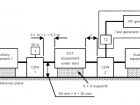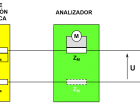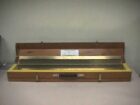- This test checks equipment operation by applying repetitive electrical transient bursts over AC, DC, and signal and telecommunication power lines.
- Electrical transients and/or bursts are generated by switching maneuvers in the interruption of inductive loads and contact bounce in relays, motors, compressors, etc.
- Other types of equipment that unintentionally produce RF electromagnetic radiation energy include inductive load switches, arc welding equipment, fluorescent lights, etc.
⇒ Levels: Depends on the standard: from 500 V to 4 kV.
⇒ Criterion: After the test, the equipment must be able to operate without any degradation or loss of function. A certain degradation of performance is allowed during the test (criterion B, usually).
Power
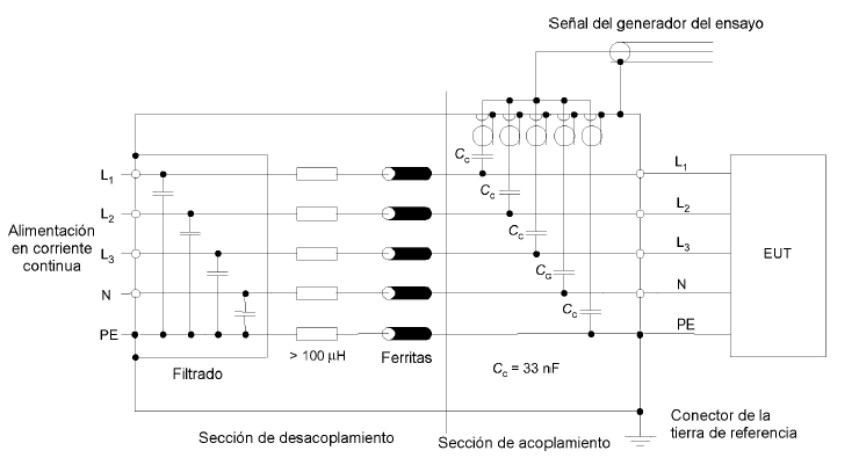
Coupling and decoupling networks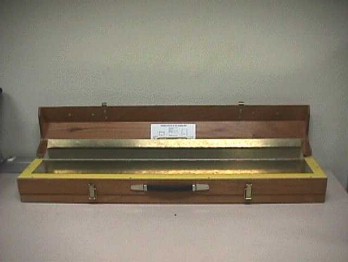
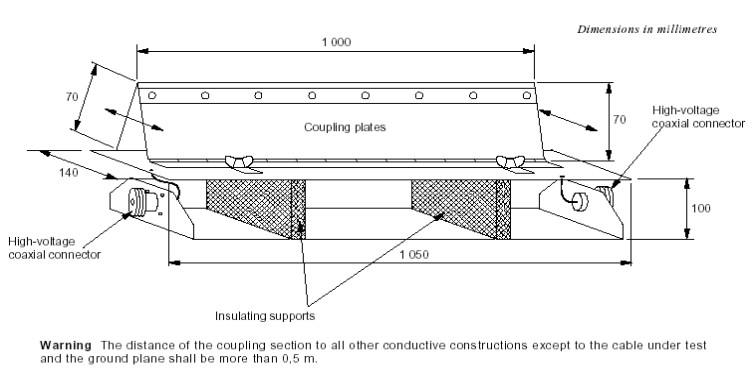
Coupling and decoupling networks
Shock waves
- This test checks equipment operation by applying bursts of overvoltage and overcurrent on AC, DC, signal and telecommunication power lines.
- Unidirectional shock waves are caused by transient overvoltages, such as those caused by lightning strikes or switching operations.
- The effect of a direct lightning strike on the equipment is not considered.
- Application: In common and differential mode. Furthermore, in the case of AC, the wave is coupled at different phase angles.
⇒ Levels: Depends on the standard: from 500 V to 4 kV.
⇒ Criterion: After the test, the equipment must be able to operate without any degradation or loss of function. A certain degradation of performance is allowed during the test (criterion B, usually).
Line – Line
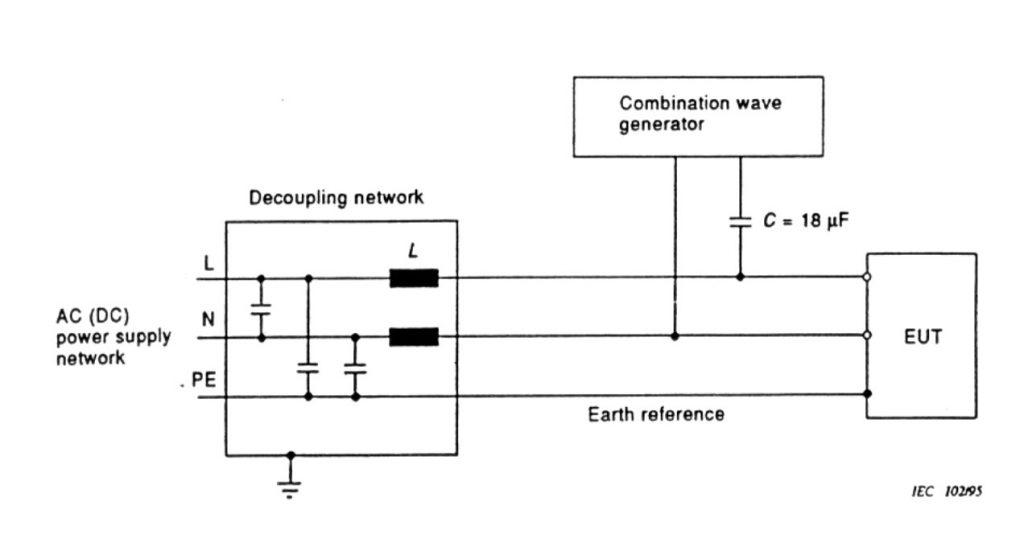 Test configuration – Capacitive coupling AC / DC lines
Test configuration – Capacitive coupling AC / DC lines
Line – Ground
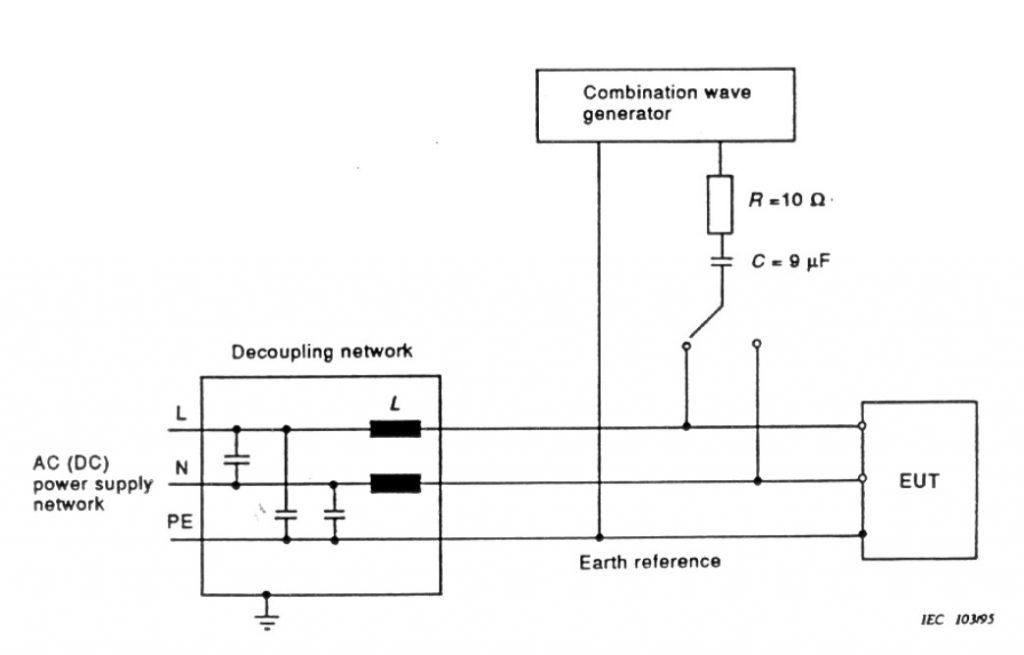 Test configuration – Capacitive coupling AC / DC lines
Test configuration – Capacitive coupling AC / DC lines
Latest posts by Media ATN (see all)
- Quantum Key Distribution - 7th November 2022
- Conducted Immunity - 20th May 2019
- Electrical transients Test - 2nd May 2019

